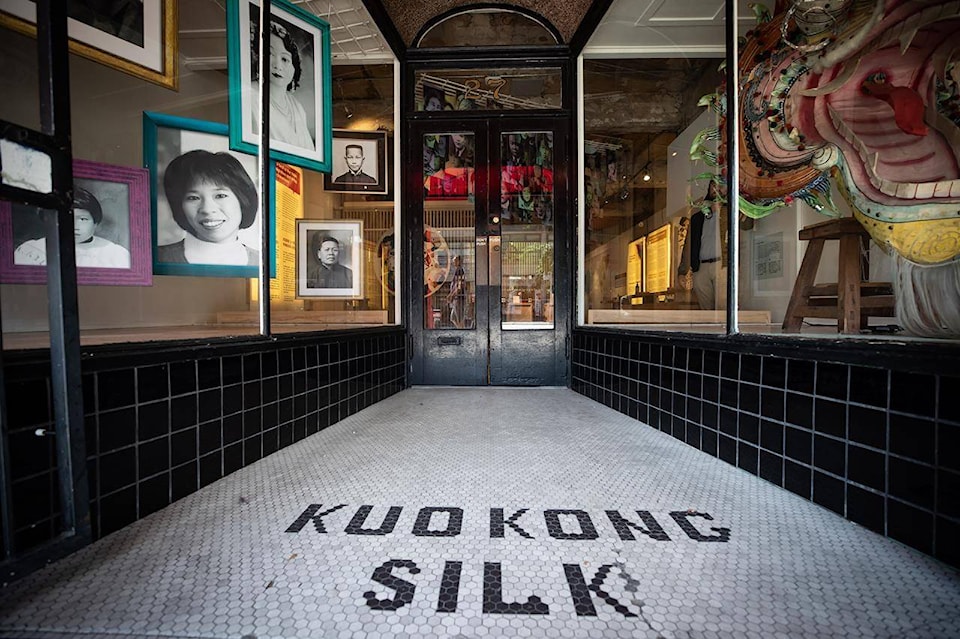A giant, intricate dragon mask and a hand-painted wok greet visitors to the first-ever exhibition of the Chinese Canadian Museum of British Columbia in Vancouver’s Chinatown.
The exhibition, called A Seat at the Table, explores historical and contemporary experiences of Chinese Canadians, particularly through the lens of food and restaurants.
“A close look at the food industry reveals the impact of racial discrimination on Chinese Canadians, but it also tells us much about their ability to resist, organize, seek justice and thrive,” reads the museum’s description of the exhibition that opens Saturday.
In one installation, the story of a campaign to save barbecue meat stores in Chinatown in the mid-1970s is told through delicate, miniature paper cut-outs of the storefronts and their supporters, as a spotlight casts their shadows high up on the wall.
Co-curator Viviane Gosselin said the exhibition was two years in the making and involved historians, educators, students, community activists and staff at the Museum of Vancouver, who collected a wide range of personal stories and items of significance from members of the Chinese Canadian community in B.C.
Their goal was to highlight the diversity of Chinese Canadian experiences and create a space where people feel comfortable sharing their own stories, she said.
“All the clusters of images and videos and artifacts are there to act as prompts for people to kind of trigger their memory,” said Gosselin, the director of collections and exhibitions at the Museum of Vancouver, which is partnered with the Chinese Canadian Museum of B.C.
A Seat at the Table includes stations for writing and recording videos, as well as a large map where visitors can illustrate where they have come from, she said.
“The whole idea is to kind of generate a new body of historical knowledge that the Chinese Canadian Museum can use for future research and programming,” said Gosselin.
Grace Wong, the chair of the society that’s working to fully establish the Chinese Canadian Museum, said the exhibition recognizes the contributions of Chinese Canadians across B.C.
“Everything from the 1880s — all the struggles, all the contributions, all of the work, whether it was building the railway, whether it was contributing in the world wars, despite not having any status.”
A Seat at the Table opens amid the COVID-19 pandemic and the Vancouver Police Department has reported that incidents of racism directed at Asian people are on the rise.
Co-curator Denise Fong wore a face mask printed with the phrase “stop the spread of racism” while touring the exhibition this week, saying she hopes the exhibition will spur conversations about how people can make change in their day to day lives.
A Seat at the Table is presented in English as well as traditional and simplified Chinese, Fong noted.
A so-called sister exhibition is set to open at the Museum of Vancouver’s main location in the fall.
Both exhibitions are expected to travel across B.C. within a year, said Gosselin, noting they’re designed to incorporate fresh content each time they open in a new location.
The B.C. government announced an investment of $10 million to establish the Chinese Canadian Museum last month, calling it the first museum of its kind in Canada.
It also gave the City of Vancouver $1 million last year to support the establishment of the museum with satellite locations planned in other communities, as well as an online portal offering interactive experiences at historical locations across the province.
The museum is part of a joint effort by the province and Vancouver to have the city’s Chinatown designated as a UNESCO World Heritage Site.
Brenna Owen, The Canadian Press
Like us on Facebook and follow us on Twitter.
Want to support local journalism? Make a donation here.
